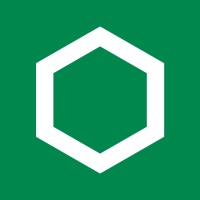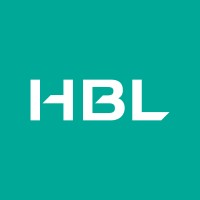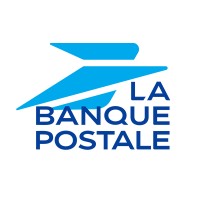Company Cyber Security Posture
NANA
NA Company Details
NA
NA
NA
NA
NA
NA
Scan still pending
NA
NA
Between 200 and 800
This score is AI-generated and less favored by cyber insurers, who prefer the TPRM score.
 NA Global Score
NA Global Score.png)

Company Scoring based on AI Models
| Model Name | Date | Description | Current Score Difference | Score |
|---|---|---|---|---|
| AVERAGE-Industry | 03-12-2025 | This score represents the average cybersecurity rating of companies already scanned within the same industry. It provides a benchmark to compare an individual company's security posture against its industry peers. | N/A | Between 200 and 800 |
Company Cyber Security News & History
| Entity | Type | Severity | Impact | Seen | Url ID | Details | View |
|---|
Company Subsidiaries

NA
Access Data Using Our API

Get company history
.png)
NA Cyber Security News
Kotak Mahindra Bank appoints Neeraj Naidu as Chief Information Security Officer
Kotak Mahindra Bank appoints Neeraj Naidu as Chief Information Security Officer · Surajit Deb Appointed as President and Chief Technology ...
SWOT analysis of Kotak Mahindra (Updated 2025)
1. Extensive Range of Financial Products and Services. Kotak Mahindra Bank offers financial products and services across numerous sectors.
Trend Micro Launches Risk to Resilience World Tour in Mumbai, Emphasizing Proactive Cybersecurity in the AI Era
Trend Micro, a global cybersecurity leader, kicked off the India chapter of its Risk to Resilience World Tour 2025 in Mumbai, gathering over ...
Trend Micro’s Risk to Resilience World Tour Kicks Off in Mumbai with a Focus on Proactive Security in the Age of AI
Trend Micro, a global leader in cybersecurity, launched the India chapter of its Risk to Resilience World Tour 2025 in Mumbai, bringing together over 130 ...
Relief for Kotak Bank: RBI lifts bar on onboarding credit card, online customers
“We welcome the Reserve Bank of India's (RBI) decision to lift the business restrictions on Kotak Mahindra Bank. This decision follows the ...
Indian bank’s IT is so shabby it’s been banned from opening new accounts
India's Reserve Bank yesterday decided Kotak Mahindra poses a risk to customers and to “the financial ecosystem of digital banking and payment ...
Transforming SME Banking Through Innovation and Digitalization
Kotak FYN: Integrated digital banking platform that is not just another corporate banking solution. We have designed it to be an ecosystem that ...
Cyber fraud in banking transactions surges in FY24: Data
India's impressive expansion in online transactions also coincides with an unprecedented spike in cyber frauds. According to data from the ...
RBI action on Kotak Mahindra Bank: Is your data in other banks safe?
The RBI has taken action against Kotak Mahindra Bank under section 35A of the Banking Regulation Act, 1949. This Act empowers the RBI to impose ...

NA Similar Companies

Desjardins
Le Mouvement Desjardins est la coopérative financière la plus importante en Amérique du Nord et la sixième au monde, avec un actif de 470,9 milliards de dollars au 31 décembre 2024. Desjardins a été nommé parmi les meilleurs employeurs au Canada par le magazine Forbes ainsi que par Mediacorp et mise

Aryavart Bank
Aryavart Bank, a Regional Rural Bank,was constituted on 1st April, 2019 after amalgamation of two Regional Rural Banks (RRBs) namely Gramin Bank of Aryavart and Allahabad UP Gramin Bank as per Government of India Gazette notification No. 338 dated 25-01-2019. Gramin Bank of Aryavart was sponsored by

HBL
HBL, Pakistan’s leading Bank, was the first commercial Bank to be established in Pakistan in 1947. Over the years, HBL has grown its branch network and maintained its position as the largest private sector Bank in Pakistan with over 1,728+ branches and 2,300+ ATMs globally, serving 37million+ client

Bank Mellat
Bank Mellat was established on 1979/12/20 by virtue of the resolution dated 1979/9/29 adopted by the General Assembly of Banks and pursuant to the provision of article 17 of the Bill on administering the Banks, with a paid up capital of Rls 33.5 bn as a merger of ten pre-revolution private banks com

La Banque Postale
La Banque Postale is a ‘bank like no other’ driven by the post office values of local presence and service. As heir to La Poste Financial Services, it is the only bank to have been tasked with a mission to provide access to banking services under the law introduced to modernise the French economy

HDFC Bank
HDFC Bank is India's largest private sector bank, offering a comprehensive range of financial products and services to our customer base of over 92 million. Our extensive distribution network of 8,919 branches and 21,031 ATMs across 3,836 cities and towns as of August 2024, reaches every corner of t

Frequently Asked Questions
Explore insights on cybersecurity incidents, risk posture, and Rankiteo's assessments.
NA CyberSecurity History Information
How many cyber incidents has NA faced?
Total Incidents: According to Rankiteo, NA has faced 0 incidents in the past.
What types of cybersecurity incidents have occurred at NA?
Incident Types: The types of cybersecurity incidents that have occurred include .
Additional Questions
What Do We Measure?
















Every week, Rankiteo analyzes billions of signals to give organizations a sharper, faster view of emerging risks. With deeper, more actionable intelligence at their fingertips, security teams can outpace threat actors, respond instantly to Zero-Day attacks, and dramatically shrink their risk exposure window.
These are some of the factors we use to calculate the overall score:
Identify exposed access points, detect misconfigured SSL certificates, and uncover vulnerabilities across the network infrastructure.
Gain visibility into the software components used within an organization to detect vulnerabilities, manage risk, and ensure supply chain security.
Monitor and manage all IT assets and their configurations to ensure accurate, real-time visibility across the company's technology environment.
Leverage real-time insights on active threats, malware campaigns, and emerging vulnerabilities to proactively defend against evolving cyberattacks.




